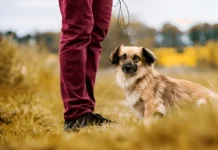Ever sat down with a hot drink by your fireplace, ready to relax, only to hear weird noises from the chimney? Maybe a soft scratching, a sudden thump, or chirping where no chirping should be. If you’ve lived in Hamilton for long enough, you probably know that animals love chimneys more than we do sometimes. It’s cozy, dry, warm, and high up—basically, the perfect animal Airbnb. But when wild guests like birds, squirrels, or raccoons decide to move in, it’s not as cute as it sounds. Chimney animal removal is about more than just shooing critters away. It’s a careful, thoughtful process done by folks who know exactly what they’re doing. And no—you don’t want to be that person poking around with a broom hoping for the best.
Let’s walk through how chimney animal removal actually works here in Hamilton, step by step, like I’m explaining it to a friend over a backyard chat.
The First Clue: Sounds, Smells, and Strange Behavior
Most people don’t discover animals in their chimney by accident. Usually, it starts with strange noises coming from the walls or ceiling. Scratching, fluttering, squeaking—it’s like your chimney turned into a wildlife concert hall. Other times, it’s the smell that hits you first. Ever had a dead mouse in the house? Multiply that by three if an animal gets trapped or doesn’t make it out.
When that happens, it’s time to act—not because it’s just annoying, but because blocked chimneys are risky. Smoke that should go outside can start rolling back into your home, and nobody wants their living room smelling like a campfire gone wrong.
So, the first real step in chimney animal removal is recognizing the signs early and calling someone who knows what they’re doing.
The Inspection Game: Finding the Culprit
When the chimney crew shows up, the first thing they do is play detective. They don’t just dive right in—they inspect. Every removal job starts with figuring out who or what has moved into your chimney.
They’ll check the outside first—sometimes animals bring twigs, leaves, or fur that sticks out of the flue. Inside, they use flashlights, mirrors, or even tiny cameras on long poles to spot nests or track where an animal might be hiding.
Why so careful? Because not all animals behave the same. Birds make soft, cozy nests. Squirrels turn your chimney into a mess of leaves and junk. Raccoons? Oh, they’re on another level. They might even have babies stashed away. Knowing who’s in there helps the pros choose the safest way to get them out without hurting them—or your chimney.
The Safe Escape Plan: No Drama, No Harm
Now comes the fun part—getting the animal out. Here’s where people usually get it wrong: it’s not about traps with scary snapping sounds or chasing wildlife with gloves and a flashlight. It’s about being smarter than the animal, not meaner.
The most common method used by professionals is called a one-way door. Think of it like those exits you push through at a store—you can go out, but you can’t come back in. They install this clever little door at the chimney opening, give the animal some time, and usually within a day or two—out they go.
For birds or animals with babies, things take a little more time and care. Sometimes the babies need to grow before they can leave safely. Professionals know these details, which is why calling someone experienced matters.
Cleaning Up: Getting Rid of the Mess They Leave Behind
Even after the animals leave, they don’t exactly send a thank-you note or clean up after themselves. Nests, droppings, food scraps—it’s all still there. And if you skip the cleanup part, you’re left with flammable material in your chimney, not to mention nasty smells or even harmful bacteria in the air you’re breathing.
Cleaning out a chimney after an animal leaves is like doing a deep clean after a messy party. It’s not glamorous, but it’s necessary. Pros will vacuum or sweep out everything that doesn’t belong, making sure your chimney is safe to use again.
Keeping Them Out: Prevention Is Everything
The last—and maybe the smartest—part of the whole process is making sure no animal ever gets inside again. That’s where chimney caps come in. These sturdy metal or mesh covers sit on top of your chimney like a lid on a jar. Smoke gets out, rain stays out, and wildlife stays where it belongs—outside.
If you already had a chimney cap and animals still got in, chances are it was loose, broken, or the wrong size. Part of a pro’s job is not just getting rid of the animals, but making sure it’s a one-time job. No one wants a repeat visit from a family of raccoons.
“Getting rid of the animal is only half the job—keeping them out for good is what makes it worth it.”
Here’s a quick look at what this process usually costs in Hamilton:
Table: Average Costs of Chimney Animal Removal in Hamilton
| Service | What It Includes | Estimated Cost |
|---|---|---|
| Inspection & Check | Finding the animal, checking for damage | $75 – $150 |
| Basic Animal Removal | Birds, squirrels, or small nests | $150 – $300 |
| Complex Removal | Raccoons, babies, or large nests | $250 – $500 |
| Cleanup | Nest material, droppings, deodorizing | $100 – $250 |
| Chimney Cap Install | New or replacement cap installation | $150 – $350 |
| Emergency Service | Urgent or after-hours animal removal | $200 – $500 extra |
Frequently Asked Questions (FAQs)
What types of animals usually get into chimneys in Hamilton?
In Hamilton, birds, squirrels, and raccoons are the most common animals found nesting or hiding inside chimneys. Occasionally, you might find bats or mice, too.
How do I know if an animal is inside my chimney?
If you hear scratching, flapping, or chirping coming from your fireplace, or if there’s a bad smell drifting into your home, it’s a good sign that something’s in there.
Can I remove the animal myself?
It’s not recommended. Animals can become aggressive if frightened, and you might make the problem worse. Plus, some species are protected by law. It’s always safer and smarter to call in a professional.
Is the removal process safe for the animal?
Yes. Professionals use safe, humane tools like one-way doors that let the animal leave on its own. For babies or nesting birds, they’ll take special care to remove them gently or wait until they’re ready to leave.
What happens if the animal dies inside the chimney?
If that happens, professionals will safely remove the animal’s remains and thoroughly clean the area to get rid of any bad smells or bacteria.
Do I really need a chimney cap afterward?
Yes, absolutely. Installing a chimney cap is the best way to prevent animals from coming back. It also helps keep rain, debris, and even sparks from escaping.
How much does chimney animal removal usually cost?
The price depends on the type of animal, how difficult it is to reach, and whether cleanup or repairs are needed. On average in Hamilton, costs range from $150 to $500.
How long does the whole removal process take?
Simple cases might take an hour or two. More complicated removals—like raccoons with babies—can take longer and sometimes require more than one visit.
Does homeowners insurance cover animal removal?
Sometimes, but not always. It depends on your insurance policy and whether the animal caused damage. It’s best to contact your provider and check your coverage details.
How can I stop animals from coming back?
Besides installing a chimney cap, having your chimney inspected yearly helps catch small issues before they turn into big problems. Keeping nearby trees trimmed back from your roof also helps reduce access for curious critters.
Final Thoughts: Better Safe Than Sorry
Hamilton’s wildlife is great when it’s outside in the parks, not scratching around in your chimney. Chimney animal removal is about more than just quieting down strange noises. It’s about protecting your home from hidden dangers like blocked flues, bad smells, and even fire risks.
If you ever hear suspicious sounds above your fireplace, don’t ignore it, and definitely don’t try to handle it on your own. Pros have the tools, skills, and experience to solve the problem without making it worse.
A warm, safe home starts with making sure that chimney works only for you—not for the local wildlife. And trust me—once it’s fixed and cleaned up, sitting by the fire will feel a whole lot better.
Read More : Hamilton Chimney Sweep
































